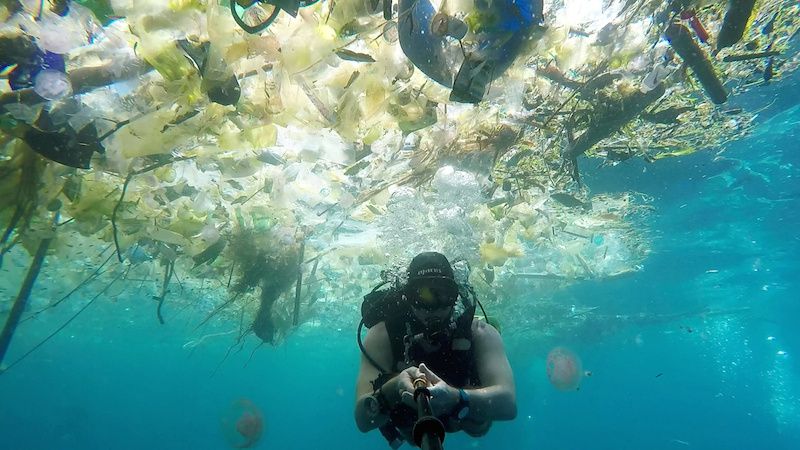
Microplastic from plastic bags and food packaging form the most common waste in the ocean, scientists warned.
Polyethylene makes up over half the plastic (54.5%) found in the Mediterranean, according to new research.
It is followed by polypropylene (16.5%) – used in margarine tubs, for instance – and polyester (9.7%) that helps create clothing, furnishings and textiles.
More than 60 per cent of the debris swirling through the sea is plastic.
But they are not all the same.
They are made of different chemical building blocks and have different densities.
Both polyethylene and polypropylene are lighter than seawater.
They float – but heavier plastics can sink to the bottom. Knowing their abundance could help prevent the pollution in the first place.
Some areas around the coastal peninsular had maximum concentrations of up to 500,000 microplastics per square kilometre – five times the average.
First author Dr William de Haan, a marine scientist at the University of Barcelona, said: “These results coincide with studies conducted in other regions of the Mediterranean, a marine ecosystem regarded as one of the biggest scuppers of floating microplastic worldwide.”
The most extreme levels were around Tordera and Besos – areas with high man-made pollution due to the high density of population, tourism, use of beaches and marine activities.
Polyethylene made up two thirds (65%) of the ocean microplastics there – and most were translucent or transparent.
The study focused on the coasts of Catalonia, Murcia and Almeria in Spain.
It also found the state of the microplastics suggested they had been in the water a long time.
Other abundant types were nylon polymers, polyurethane (PUR), polyethylene terephthalate (PET), ethylene-vinyl acetate (EVA), polyvinyl chloride (PVC), acrylonitrile butadiene styrene (ABS) and fluorocarbon polymer.
The experts also identified, for the first time, signs of plastic materials with marine origins – in particular, particles of ship painting – which were not analysed in the Med basin until now.
They looked at about 2,500 samples of plastic materials taken from different oceanographic campaigns in each area that float and are likely to come from the continent.
In the coastal waters of Murcia and Almeria, the variety is even higher – mainly nylon, polyurethane or polyethylene terephthalate – than those off Catalan.
The most predominant are dense and drown easily.
Plastics do not always behave the same way, and that is why their final destination in the marine environment remains a mystery.
Co author Professor Anna Sanchez-Vidal said: “Size and physical and chemical properties, as well as the conditions of the marine environment, determine the destination of microplastics in water.
“Density of the plastic material is a determining factor regarding big fragments. When talking of a microplastic, dynamics are more complex.
“Also, density of marine water varies due several factors – temperature, salinity, geographical position, depth – and it affects directly the buoyancy of the microplastics.”
She added: “Around 66% of the microplastics we found in marine aggregates – polyethylene, polypropylene and expanded polystyrene – are low density microplastics in the sea.
“This hypothesis could explain the presence of low-density microplastics in big marine depths worldwide, and why the abundance of plastics floating in the surface of the ocean is lower than expected.”
Regarding the Mediterranean, some of the most important resources on environmental protection are the Marine Strategy Framework Directive (MSFD) and the Barcelona Agreement for the Protection of the Mediterranean Sea, signed in 1976 and modified in 1995.
The study was published in the journal Marine Pollution Bulletin.
https://www.thelondoneconomic.com/news/environment/balloons-released-into-the-air-are-killing-seabirds-and-sea-turtles/01/03/